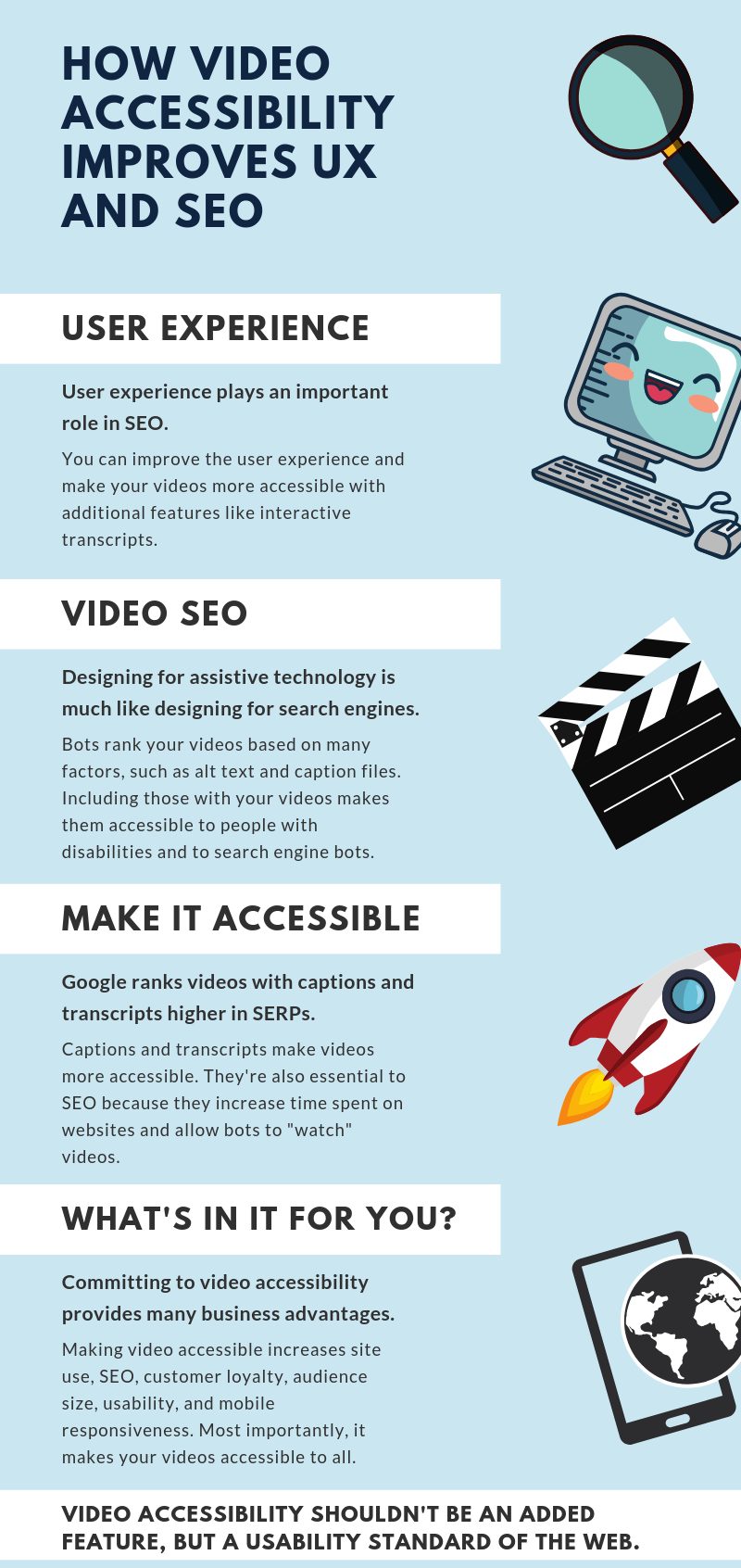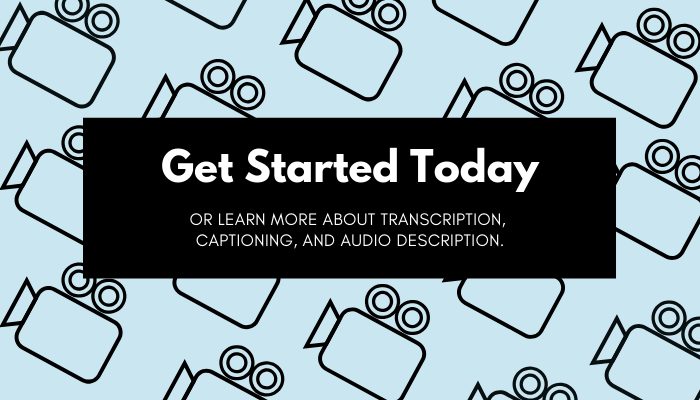How to Improve Video SEO and UX with Accessibility
Updated: June 26, 2024
Online video has the profound ability to communicate a message quickly and to engage in effective storytelling simultaneously. Companies must deliver video content to their audiences in new and appealing ways, and online video marketing strategies must be thoughtful and deliberate.
Video accessibility is often left out of consideration, though, and what companies may not know is that a lack of video accessibility is limiting their reach, sacrificing their user’s experience, and diminishing SEO potential. On top of that, companies that ignore video accessibility are at risk of legal repercussions.
In this post, we’ll explore the benefits of accessible video content for businesses and how it can significantly improve engagement, user experience, and SEO.

Accessibility and User Experience
User experience (UX) is described as a person’s emotions when using a particular product, system or service. Technology and the internet have lessened the need for face-to-face interaction between people and the businesses they support, making a positive user experience crucial.
It used to be that website designers and information architects were the groups managing UX, but that is no longer the case. Marketing content like blog articles and white papers must be designed to propel the buyer’s journey. Videos must be unique and useful, but they must also exude a positive experience to the viewer. A video that facilitates a positive experience may include things like colorful graphics, quality information, and credible resources. Also, making videos accessible through the use of captions and transcripts improves UX.
Accessibility and Video SEO
Google’s and other search engines’ task is to organize the web’s boundless information, ideally in a way that makes utilization simple for search engine users. That’s why creating content that’s optimized for search engines is crucial to growing engagement metrics. This is known as search engine optimization (SEO); for video content, it’s known as video SEO.
Interestingly enough, designing for assistive technology is a lot like designing for search engine bots. For example, alternative text for multimedia is available to search engines, but it can also be understood by someone who’s blind and uses a screen reader. Meanwhile, video transcripts and captions allow video content to be accessed by users who are deaf or hard of hearing and by search engines, since search engines rely on text to “watch videos.” Multimedia content is seen as an enhancement to the online experience, but when done incorrectly it keeps certain users out, and that’s the last thing search engines want to see.
Even with assistive technology, disabled users hit roadblocks caused by poor design or technical incompatibilities. This oversight can negatively impact SEO and bounce back rates when users aren’t patient enough to deal with an interface problem or a slow website. This is why user-centered design is critical.
Transcripts, Captions, and Video SEO
Did you know that Google ranks videos with captions and transcripts higher in search engine results? In this section, we’ll explain how captions and transcripts make videos accessible while also increasing SEO and user engagement.
Captions are time-synchronized text that can be read while watching a video. Captions assume that the viewer is completely deaf and include all spoken content as well as non-speech elements, like music or sound effects.
Transcripts are a word-for-word text representation of a video’s spoken content without the time-synchronization. Transcripts are helpful to users who are deaf and/or blind.
Transcripts and captions are also essential to SEO because they increase the time spent on websites. A study by Discovery Digital Networks shows that captioned videos get more views than non-captioned videos. Another study by Facebook found that captions increase video views by 12% compared to uncaptioned videos. The bottom line: when you add captions and transcripts to your videos it makes them accessible, it ensures that your audience is getting the message, and it helps viewers to enjoy the viewing experience more.
The Case for Video Accessibility
Both universal web design and accessible video can increase the use of a company site and accompanying videos. By implementing web accessibility, companies can offset financial costs with social, technical and financial benefits. Committing resources to video accessibility and accessible web design provides numerous business advantages.
Many important factors like site use, SEO, customer loyalty, audience size, usability, and mobile responsiveness can increase along with the implementation of accessible design practices. Conversely, the risk of legal action and negative perception of a brand decrease.
As you can see, businesses have much to gain from implementing video accessibility and little to lose. A video SEO strategy that takes accessibility into account amplifies already great content. While businesses are starting to realize the powerful link between video captions, transcripts, and SEO, many don’t understand how video accessibility plays a vital part in the user experience.
In the future, accessibility won’t be an added feature, but a usability standard of the web.
Ready to start making your videos accessible? Get started with 3Play Media.








